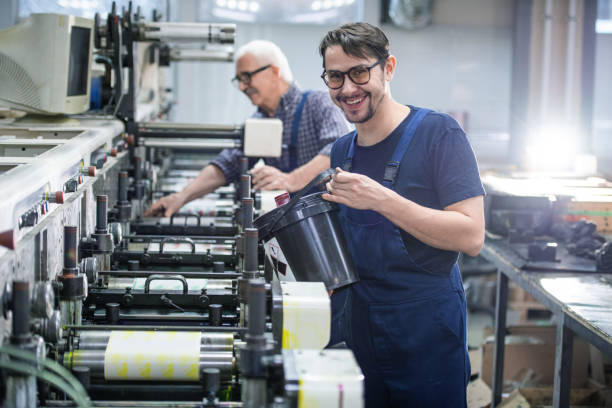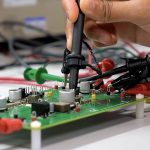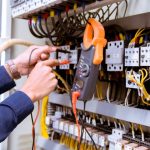Introduction
Printing machines are the backbone of the printing industry, enabling the production of everything from books and magazines to packaging and promotional materials. Setting up and maintaining these machines is critical to ensuring efficient operation, high-quality output, and longevity of the equipment. This article provides a comprehensive guide to setting up printing machines and maintaining them for optimal performance.
The Importance of Proper Setup
Setting up a printing machine correctly is the first step in achieving high-quality prints and efficient operation. A well-setup machine can prevent common issues such as misalignment, ink smudging, and paper jams. The setup process involves several key steps:
Machine Positioning: The printing machine should be placed on a stable, level surface to prevent vibrations that can affect print quality. Ensure that the machine is easily accessible for operators and maintenance personnel.
Electrical and Pneumatic Connections: Printing machines typically require robust electrical connections to handle the power needed for operation. Ensure that the machine is connected to a reliable power source with the correct voltage. If the machine uses pneumatic components, verify that the air supply is sufficient and free of moisture.
Calibration: Calibration is essential for ensuring that the machine produces consistent and accurate prints. This involves adjusting the print heads, rollers, and other components to the correct settings based on the type of material and ink being used.
Software Setup: Modern printing machines are often controlled by software that manages the print jobs, color settings, and other parameters. Properly configuring this software is crucial for achieving the desired print quality. Ensure that the software is up-to-date and compatible with the machine’s hardware.
Test Runs: Before starting full-scale production, run test prints to verify that everything is set up correctly. This allows you to make any necessary adjustments and ensures that the final prints will meet quality standards.
Key Considerations for Setting Up Printing Machines
When setting up a printing machine, several factors must be considered to ensure optimal performance:
Type of Printing Machine: Different types of printing machines—such as offset, digital, or flexographic—have different setup requirements. Understanding the specific needs of the machine you are working with is crucial for a successful setup.
Material Compatibility: Ensure that the machine is compatible with the materials you plan to use, whether it’s paper, cardboard, plastic, or other substrates. This includes checking the thickness, weight, and surface characteristics of the materials.
Ink Type: Different inks require different handling and setup procedures. For example, UV inks need specific curing processes, while water-based inks may require precise humidity control.
Print Volume: Consider the expected print volume when setting up the machine. High-volume jobs may require adjustments to the machine’s speed, cooling systems, and ink supply mechanisms to maintain consistent output.
Maintaining Printing Machines
Regular maintenance is key to keeping printing machines in top condition and preventing costly breakdowns. A well-maintained machine not only produces better prints but also has a longer lifespan. Here are the main aspects of maintaining printing machines:
Daily Maintenance: Operators should perform basic maintenance tasks daily, such as cleaning the print heads, checking for ink or toner levels, and inspecting the rollers and belts for wear and tear.
Scheduled Maintenance: More in-depth maintenance should be performed on a regular schedule, which includes tasks like lubricating moving parts, replacing worn components, and calibrating the machine. This helps to catch potential issues before they become serious problems.
Software Updates: Ensure that the machine’s software and firmware are regularly updated. Software updates often include performance improvements and bug fixes that can enhance the machine’s operation.
Operator Training: Well-trained operators are essential for both setup and maintenance. Providing ongoing training ensures that operators are familiar with the latest techniques and best practices for operating and maintaining the machine.
Spare Parts Management: Keeping a stock of essential spare parts is crucial for minimizing downtime in case of a breakdown. This includes items like print heads, rollers, belts, and sensors.
Troubleshooting Common Issues
Even with regular maintenance, issues can arise with printing machines. Some common problems and their solutions include:
Paper Jams: Paper jams are often caused by misaligned rollers or incorrect paper loading. Ensure that the paper is loaded correctly and that the rollers are clean and properly aligned.
Ink Smudging: Smudging can occur if the ink does not dry properly or if there is too much ink on the paper. Adjust the ink settings and ensure that the drying process is functioning correctly.
Color Inconsistencies: Inconsistent colors can be due to incorrect calibration or issues with the ink supply. Recalibrate the machine and check the ink levels to
resolve this issue.
Poor Print Quality: If the prints are blurry or have lines, it could be due to dirty print heads or worn-out rollers. Clean or replace the necessary components to restore print quality.
Conclusion
Setting up and maintaining printing machines is a critical aspect of ensuring the smooth operation and high-quality output in the printing industry. By following best practices for setup and maintenance, operators can extend the life of their machines, reduce downtime, and produce consistently excellent prints. Whether dealing with small-scale or large-scale printing, attention to detail in these areas is essential for success.






